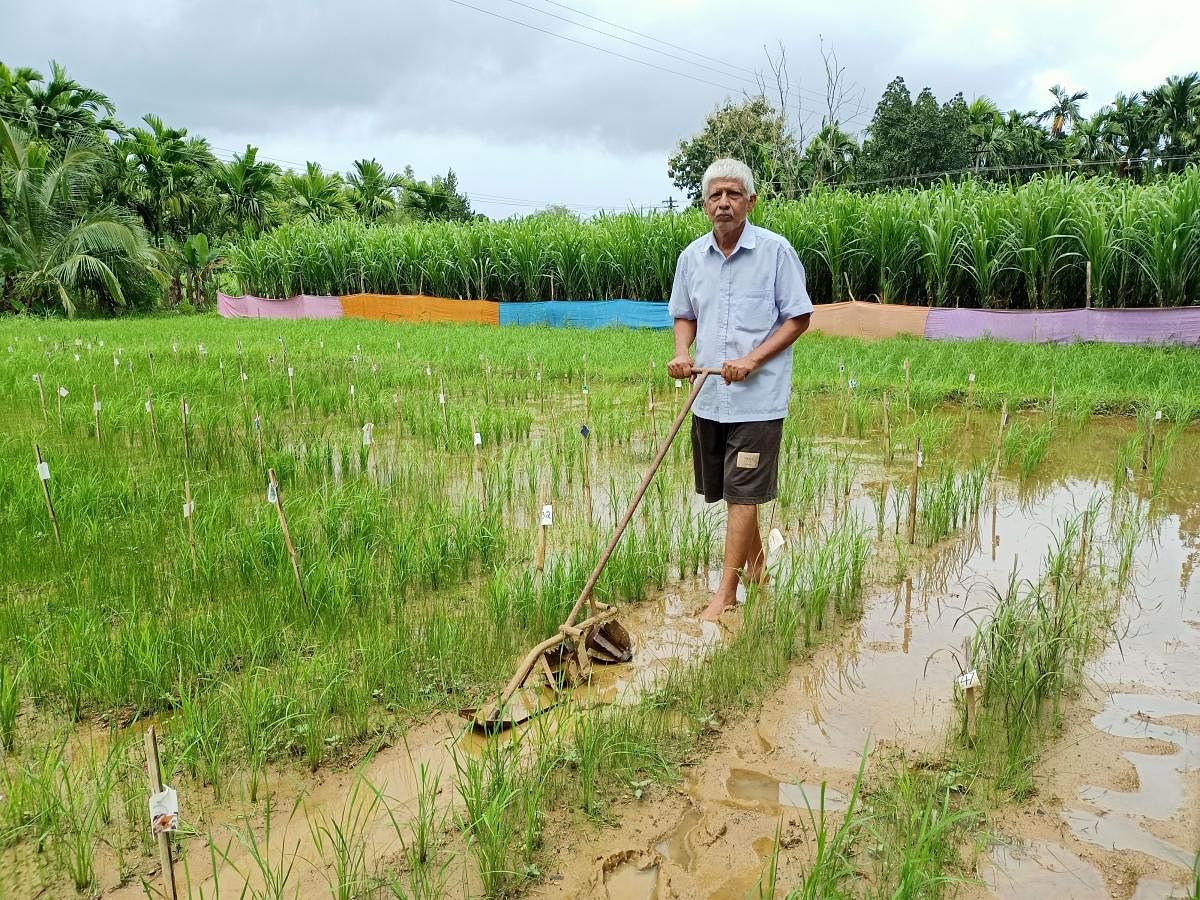
Over the years, the area under paddy cultivation has been dwindling in Uttara Kannada district due to several reasons. However, there are a few farmers who have been making efforts to preserve heirloom seeds and motivating other farmers to save paddy diversity.
One such farmer with a huge collection of local paddy varieties is Ramakrishna Bhat (66) of Devathemane in Uttara Kannada’s Sirsi.
Bhat’s four-gunta land has around 265 traditional varieties of paddy. Over the past 20 years, this small parcel of land has become a laboratory for him to experiment and learn.
He earmarks a patch of land to grow each variety of paddy and marks each patch for easy identification. He also systematically maintains a register in which he records information about these varieties. Currently, his register has comprehensive information of about 200 varieties of paddy and the study of another 65 varieties is underway.
Apart from local varieties such as Kalave, Mattagalla, Jenugoodu, Gowdara Bhatta, Jigga Varatiga, Neera Muluga, Kari Kantakam, he also has paddy varieties from Nepal and Thailand.
“Once the harvesting is done, I collect and preserve some seeds carefully so that it can be used the next year. Then, I give off the remaining seeds either to enthusiasts involved in the study of paddy or local farmers for free,” says Bhat, adding that the main intention of his experiment is to conserve paddy varieties.
Bhat, in fact, has not sought any special guidance from experts to maintain his farms. His farm, instead, attracts a number of agriculture scientists.
An effort in Kumta
Another young farmer who has made conservation of paddy variety his main aim is Nagaraj Naik from Kagal in Uttara Kannada’s coastal area of Kumta.
Nagaraj has been raising around 170 varieties of paddy in his field and this includes several varieties that are rare and on the verge of extinction.
His collection of seeds includes the almost forgotten Bili Kagga and Kari Kagga (black and white Kagga) varieties of paddy that are saline-tolerant and are grown only in the ‘Gajani’ land, which are tidal wetlands in a small area of the Aghanashini estuary in Kumta.
Along with this rare paddy variety, his collection has varieties such as Mahaveer, Rajamudi, Jayapadma, Selam, Govadhan-1,2,3,4, Rajabhoga, Nagabhatta, Shakthi, Ratnachoodi, Bhootnath, Mysuru Mallige, Kaje Jaya and Kandu bhatta. He also has paddy varieties that can be grown in both saline and deep water.
Naik raises these paddy saplings in a compact patch of land around his house and then transplants them in his farmer friends’ fields.
As he cultivates these paddy varieties as an experiment, he sows around five kg seeds of each variety.
“In the initial days, I had cultivated the Moudamani variety of paddy from Assam, on an experimental basis as I wanted to observe its growth in the coastal waters. I succeeded in my attempt as it gave a good yield. Motivated by this, I took to preservation of other paddy varieties,” says Naik showing the green seedlings growing in his court yard.
Co-operative efforts
Not just individual endeavours but there are also mass efforts to save the Kagga variety here.
In Kumta area, the Manikatta Kagga Bhatta Belegaarara Sangha (association of Kagga growers) has been involved in saving the Kagga variety. This paddy can withstand standing water, is largely pest-free and has a unique taste. But it has been dwindling due to shortage of seeds.
Each year, they raise the Kagga variety on around 30 acres of land without the use of fertilisers and on co-operative principles.
Around 200 farmers having lands around the Gajani (or Kharland) are part of this experiment. Though not on large-scale, all these efforts have been yielding good results and contributing to saving the gene pool of rice.
(Translated from Kannada by Divyashri Mudakavi)
